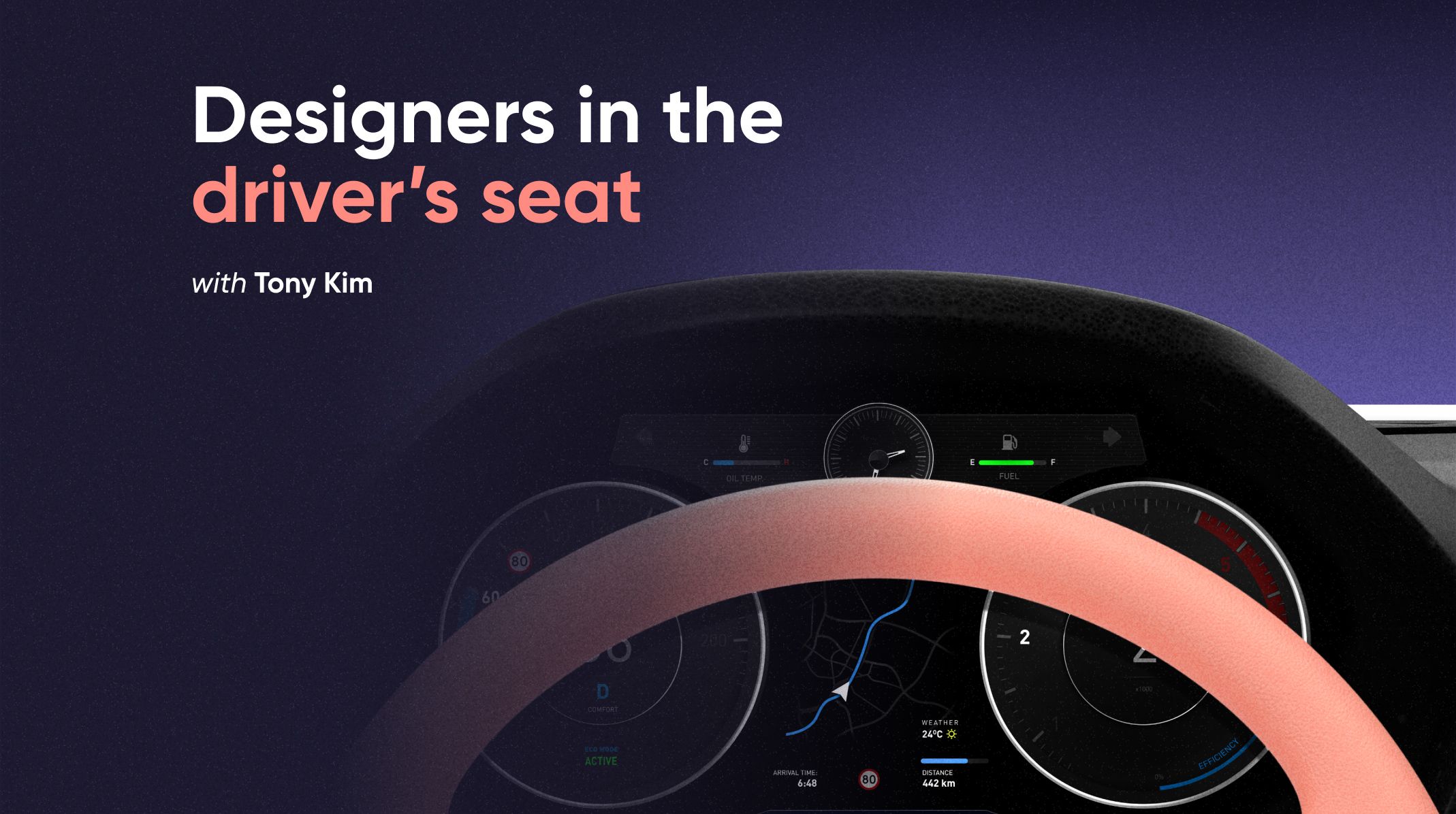Using ProtoPie to Design Tomorrow’s Electric Vehicles
Automotive prototyping—without a developer in sight! Discover how Arrival uses ProtoPie to build prototypes for the sustainable vehicles of the future.

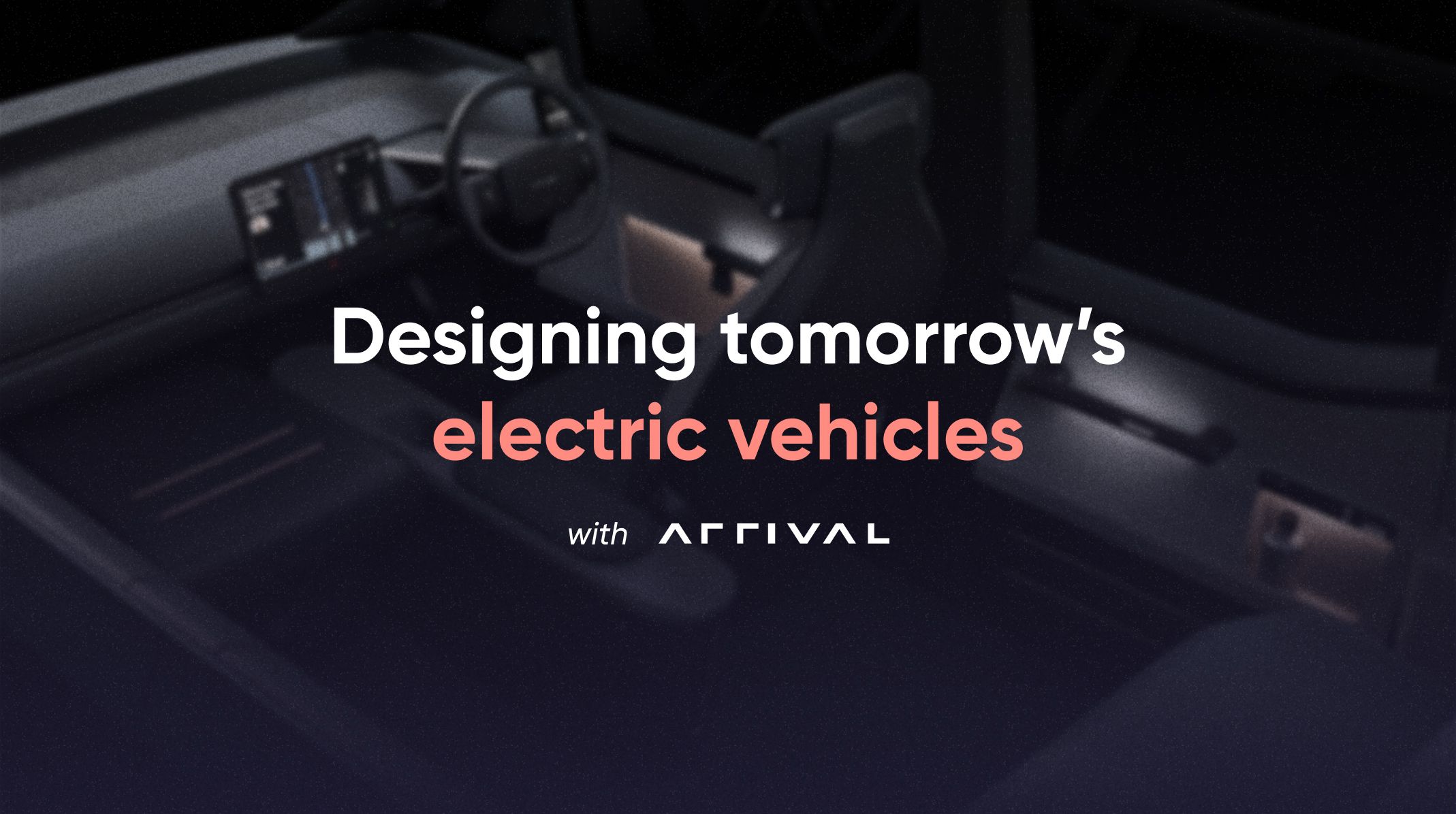
Arrival, a British electric vehicle manufacturer, is on a mission to create more than just cars.
They understand that to combat the climate crisis, we need transformative solutions to lower carbon emissions, reduce air pollution, and keep waste out of landfills—and we need them fast.
Their solution? To make radical changes to the way we design and produce electric vehicles by
- Removing cost barriers to electrification.
- Using low-footprint materials made to last.
- Designing vehicles to be accessible for a diverse range of users.
To bring such revolutionary ideas to life, you need high-quality tools - and to not be slowed down by confusing code and tech jargon.
That is precisely why Arrival’s designers started using ProtoPie to create automotive UX prototypes—without help from developers and engineers. Here, you can hear from the HMI design team at Arrival on how they create high-fidelity prototypes for buses and vans using ProtoPie.
Challenges of automotive UX prototyping
Driving is a complex activity that requires a lot of cognitive load.
Any distraction could lead to human error, so to avoid devastating consequences, the car UX design process requires particular care and attention—to every single detail of the experience.
It is essential for the team at Arrival to test every iteration of the vehicle while driving to ensure that everything runs safely.
Let’s look at some of the challenges they faced when designing the user experience for two of their products, Arrival Van and Arrival Bus.
Arrival Van: Driver-focused UX design for a single user.
Arrival Van has a modular design that scales to multiple variants, meaning that it is made up of components that you can easily replace to ensure a longer life cycle.
In this vehicle, the focus of the design is on the driver, with considerations for aspects like:
- Safety.
- Ease of use.
- Comfort.
The cabinet area is where the drivers spend most of their time. It has a digital screen designed by the HMI design team, which is also responsible for all physical and digital touchpoints that aim to create better experiences for the user.
Arrival Bus: Accessible UX design for multiple users.
For the Arrival Bus, the prototyping process can be a little more complicated. That is because the team has built the vehicle not just for the driver—but also with consideration for passengers and fleet operators.
These are examples of components that enhance accessibility and showcase integrations between digital systems and physical design:
- The floor is flat, making it more accessible and easy to clean.
- The poles have touch points that serve as the primary means of communication between the passengers and the driver.
- Internal screens around the bus mirror the interaction to let passengers know that a stop has been requested and how much time remains until the bus stops.
At Arrival, the digital team works alongside the industrial design team to form digital experiences into physical products.

These types of seamless hardware-software integrations allow the HMI design team to create unique experiences, rather than digital experiences based on pre-existing hardware.
The result, they say, is an “experience that almost feels magical.”
What makes it magical? ProtoPie.
How Arrival uses ProtoPie to revolutionize their HMI design process
Led by a guiding principle of product safety, Arrival innovates everything from the manufacturing process all the way to human sensory design in their products.
The design team at Arrival relies on two tools in their workflow.
As a first step, they explore iterations of the product in Figma. In the second step, they build every design component with ProtoPie.
There are two main ways they use ProtoPie, which we will look at in more detail in the below sections.
1. Focusing on human sensory design.
The first part is about people.
As mentioned earlier, testing while driving is an important part of the automotive UX design process at Arrival.
The team tests every part of the design rigorously to ensure safety, with a human-centered focus on the person driving the vehicle.
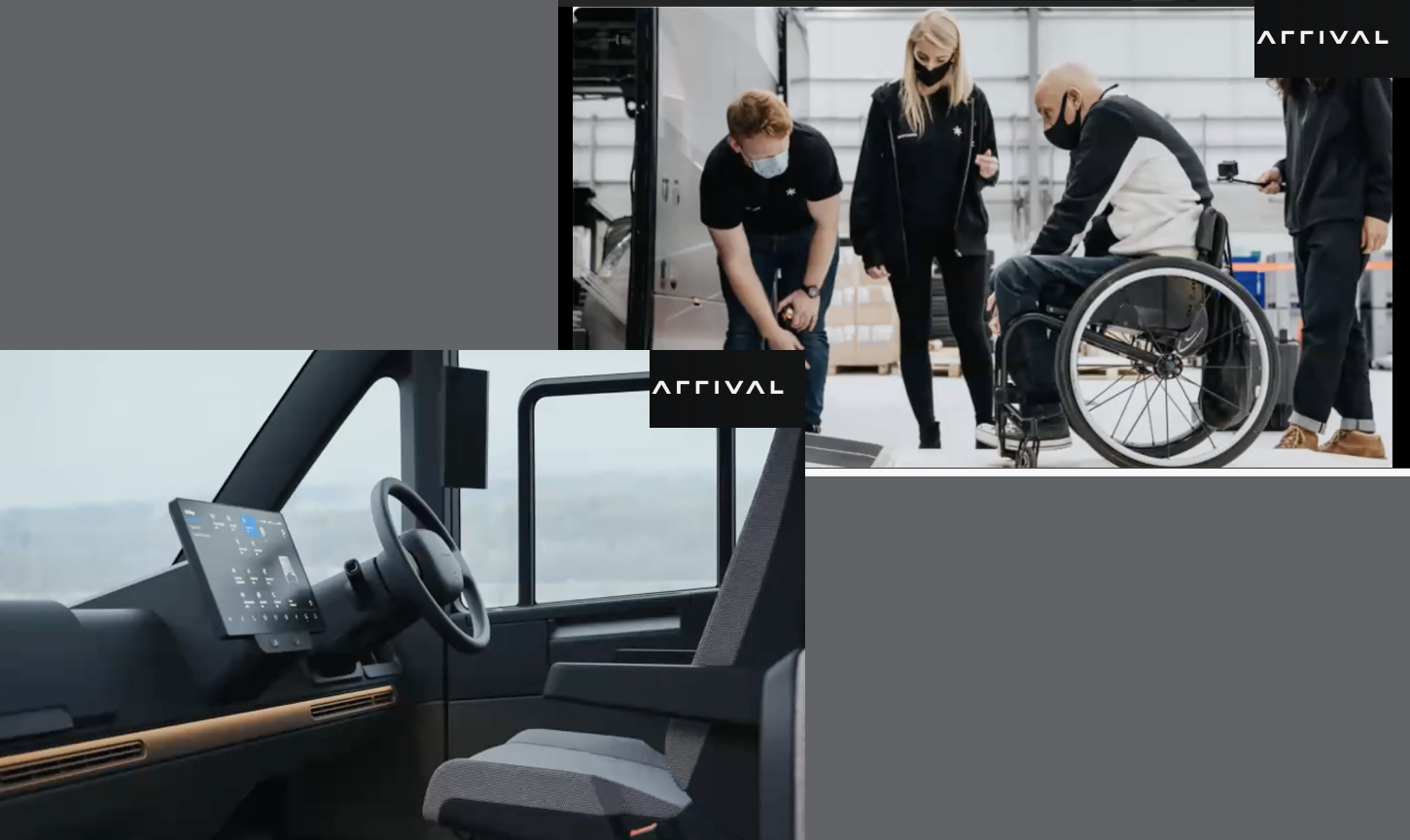
In the UX testing process, they look at aspects like:
- The ergonomics of how people drive while interacting with the screen.
- The emotional aspects of the experience.
2. Creating a bridge between the physical and digital.
Beyond the screen itself, the team looks at what the physical controllers do and how they appear on the screen. For example, during the automotive HMI design process, they ask questions like:
- If you hit the stop button or steer the wheel, how does it look like on the screen while you do these interactions?
- How does the vehicle interact to the outside environment?
The next section will look at examples of how Arrival prototypes vehicles with ProtoPie, and how these principles translate to real-life practice.
Examples of vehicle prototypes made with ProtoPie
For the first use case, the design team at Arrival uses a simulator with a real engine, pedals, steering wheel and a screen on the right-hand side. It is designed exactly like the real end product, to allow for quick feedback and new iterations as necessary—even as early as the next day.

In the second use case, the team created “God Mode” where the user can set the day or change the weather to see how the interface reacts to changing external conditions.
One of the benefits of ProtoPie is that they can have everything in one place, to show to different engineers and stakeholders.
It is possible to display every component in detail, but also as a whole to enhance understanding of every stakeholder’s role in the bigger experience.
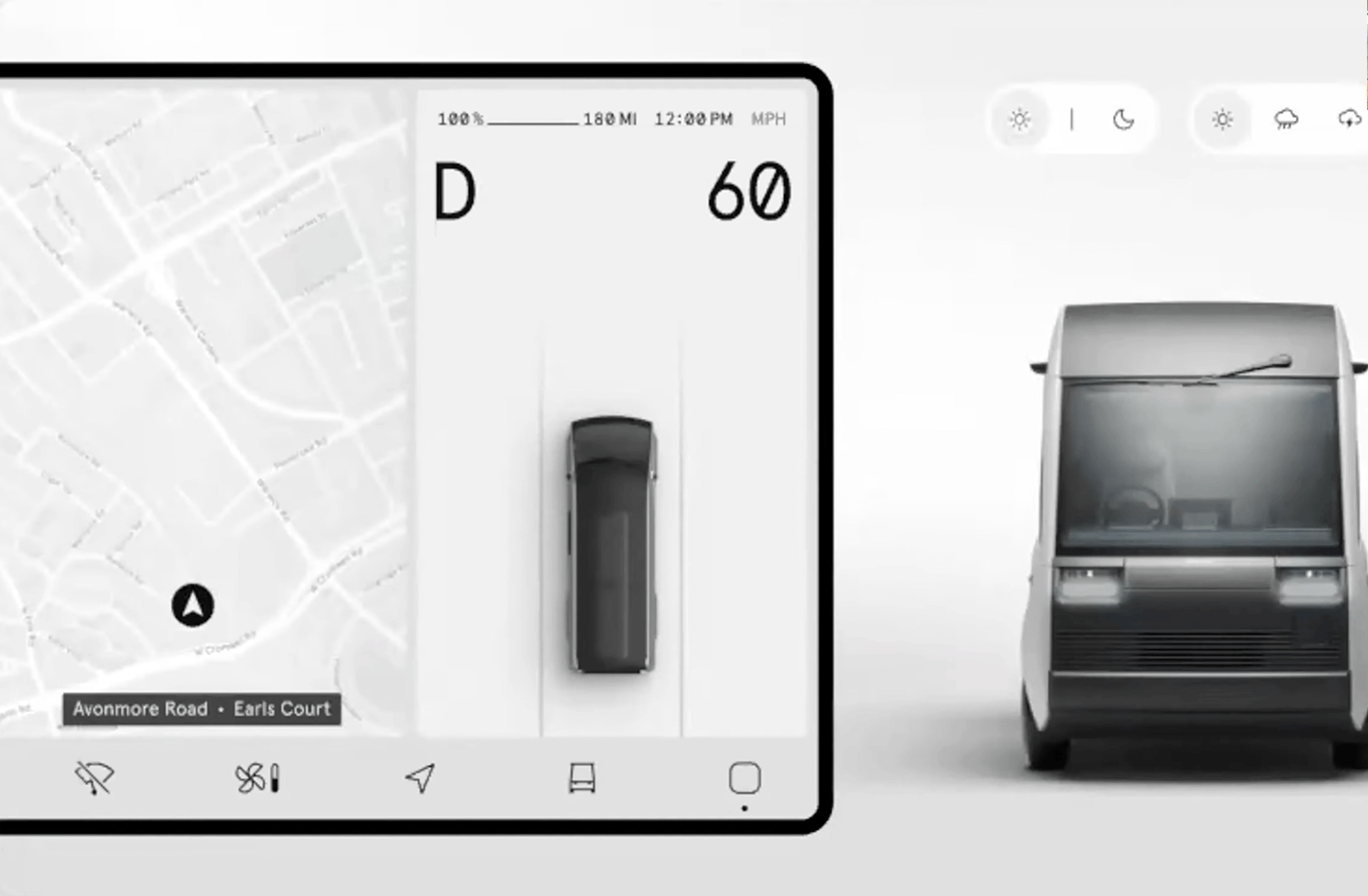
The last example is the Arrival Bus, which has internal screens that are all contextual to the bus journey.
The team created a prototype that allowed them to visualize every stage of this journey, which was especially helpful as traditional flat design tools make it difficult to communicate such complex information.
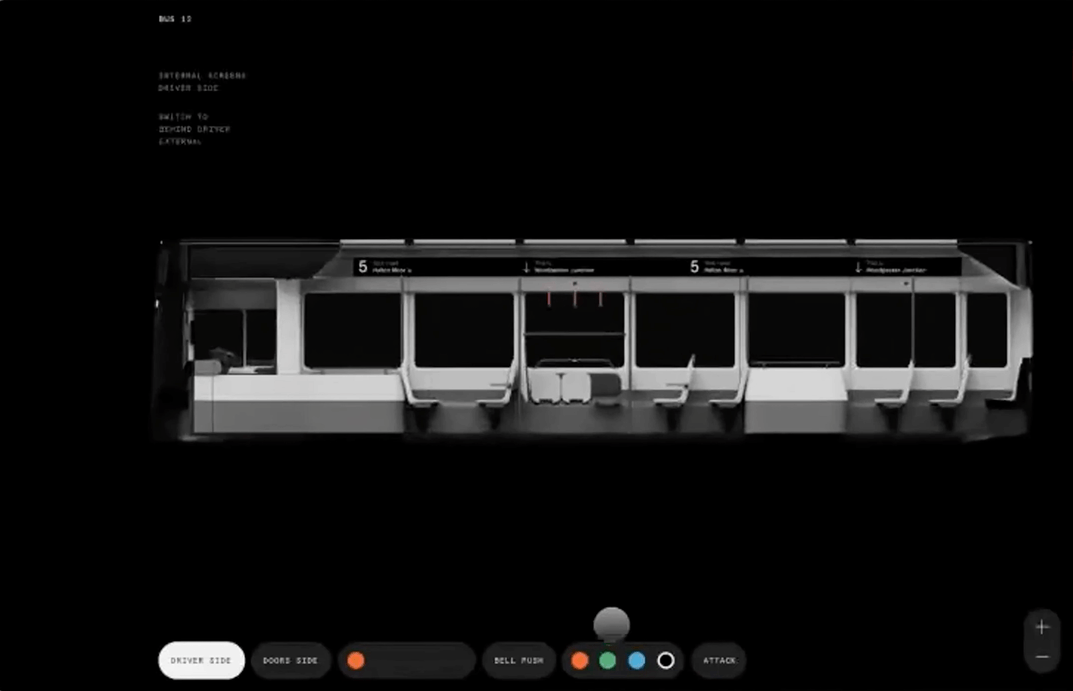
With ProtoPie, they can share a prototype where people can play around with the iteration, tapping interactions like “stop” and “request” and see what happens in response.
Every single one of these examples was built by designers, not developers.
In short, ProtoPie has been the ideal solution to help Arrival increase the speed and quality of their prototypes—empowering them to achieve their goals faster.
Design the vehicles of the future with ProtoPie.
ProtoPie is the go-to UX design tool for more than 15,000 companies. Book a demo to learn more about how we can benefit your automotive prototyping workflow.

